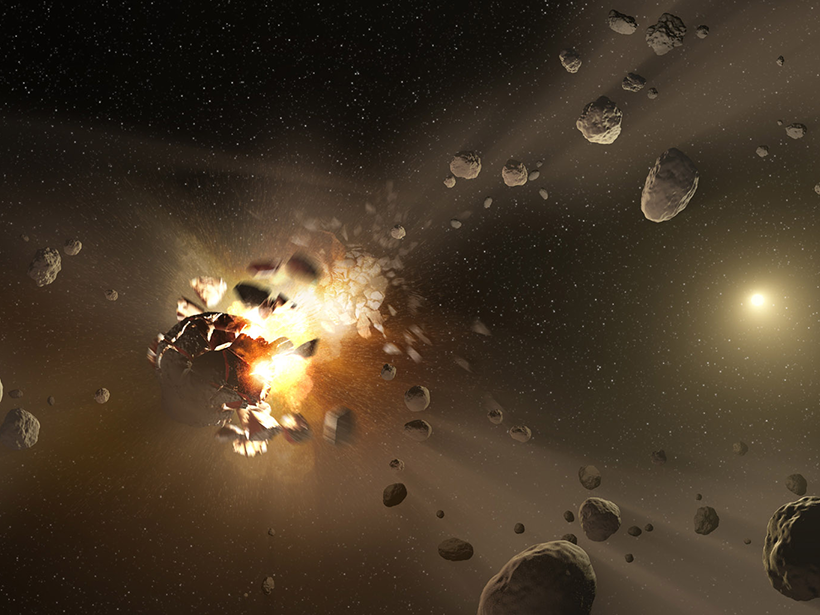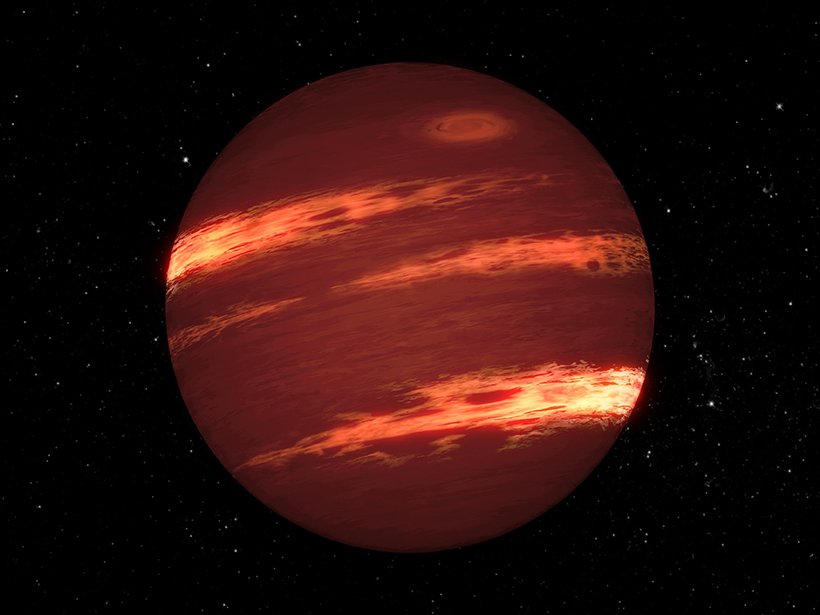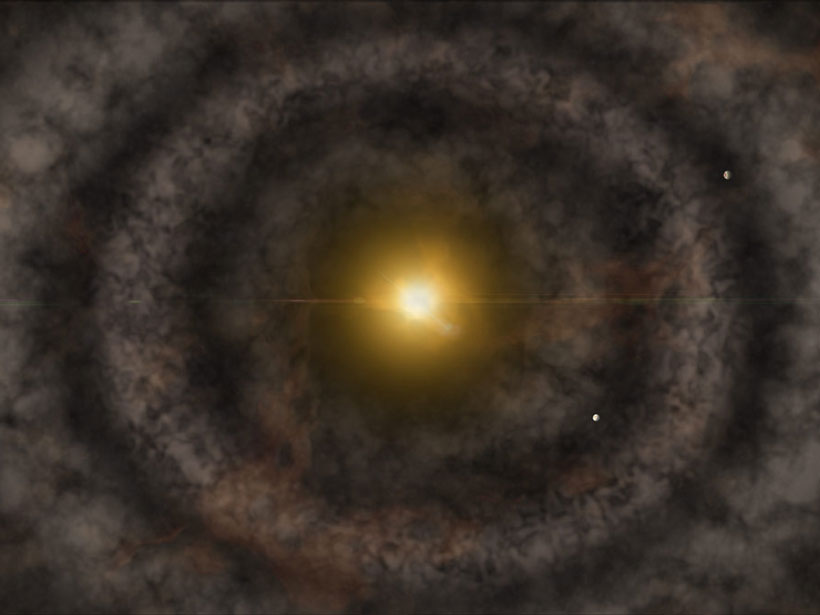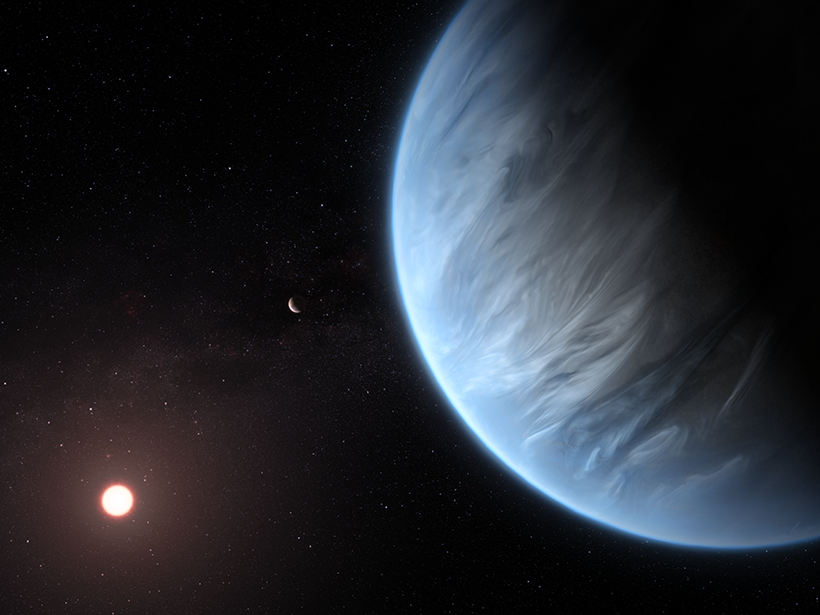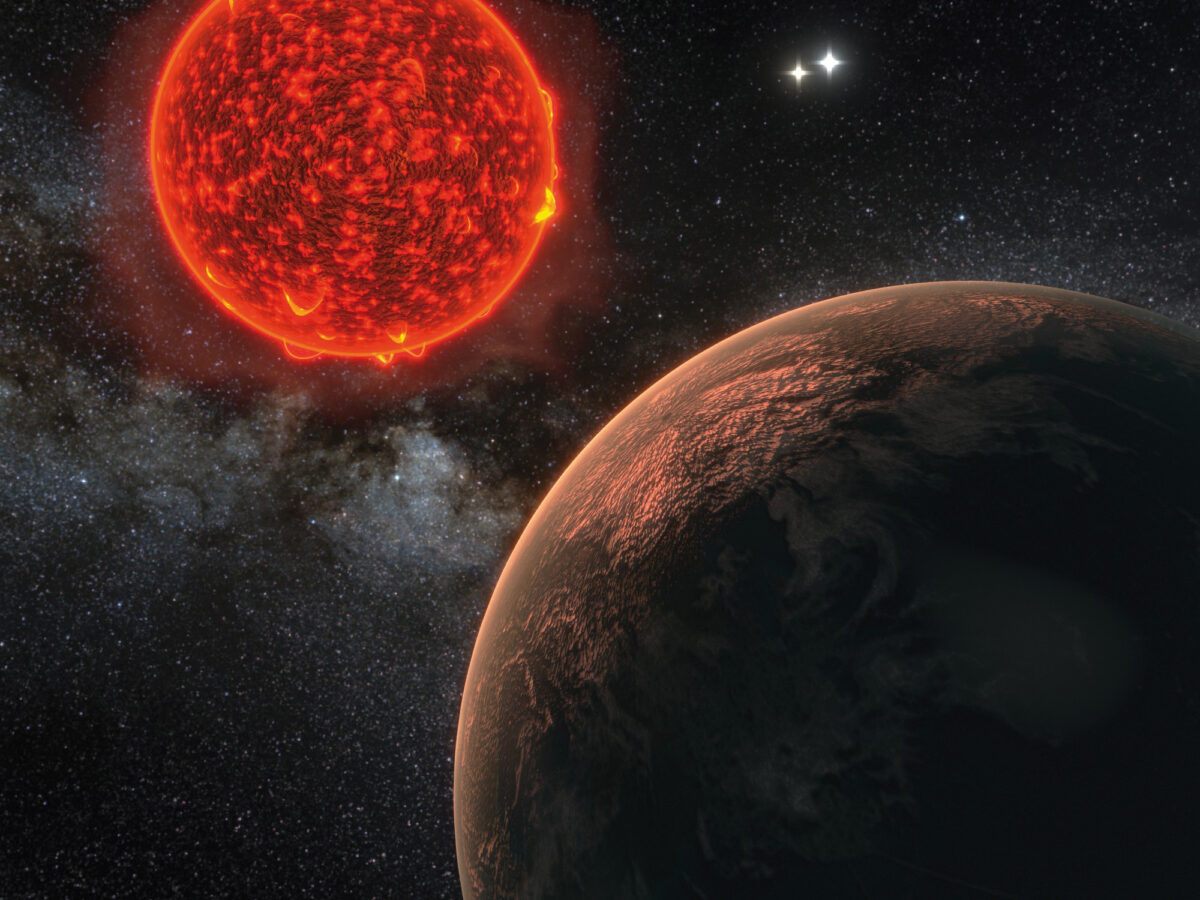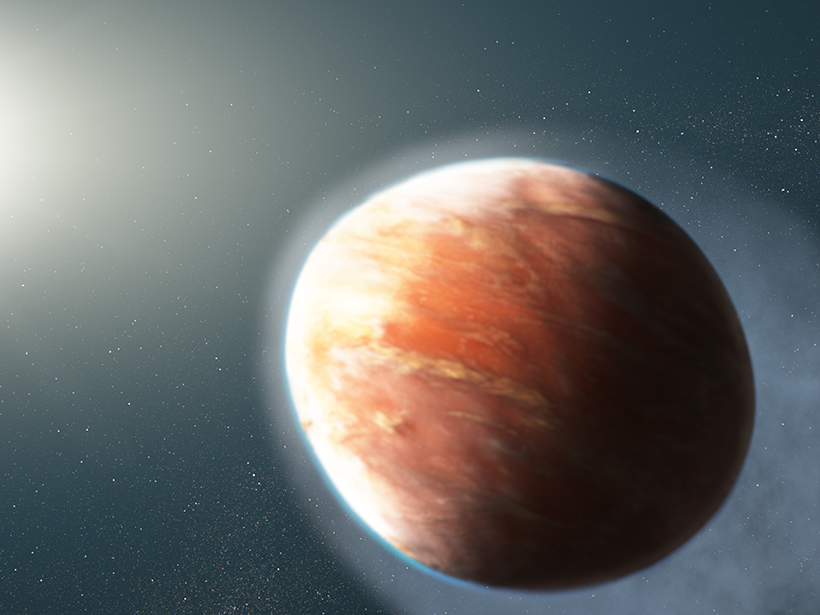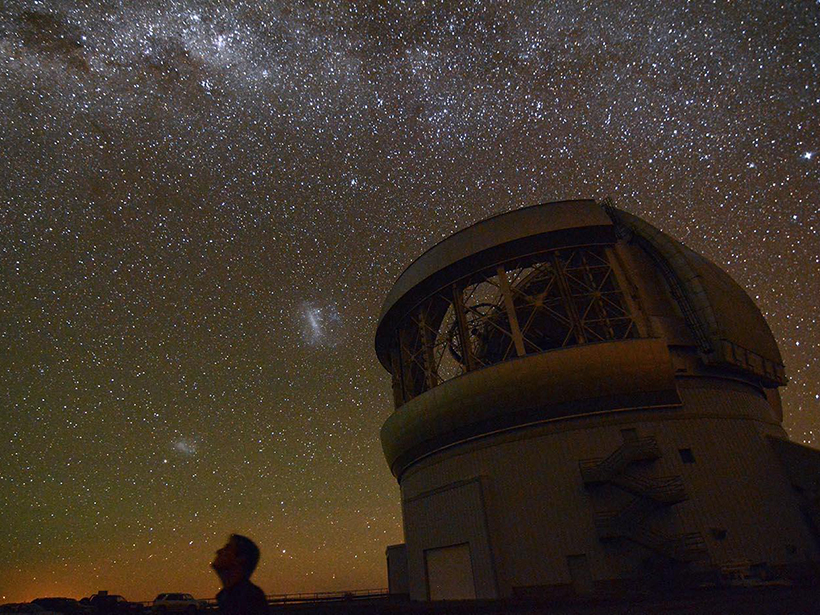New analysis of Hubble Space Telescope images suggests that Fomalhaut b, once believed to be an extrasolar planet, is, in fact, a cloud of dust that likely formed from the collision of enormous asteroids.
exoplanets
Record-Setting Winds on a Nearby Brown Dwarf
Infrared and radio observations reveal zonal winds moving faster than 2,000 kilometers per hour on a “failed star” in our celestial neighborhood.
Earth’s Skies Transmitted Signs of Life During Lunar Eclipse
Using upcoming ground- and space-based telescopes, scientists hope to make similar observations of the skies of distant, Earth-like exoplanets.
Hot White Dwarfs May Reveal Cold Gas Giants
The gaseous atmospheres of giant planets may evaporate and accrete onto the dense surfaces of white dwarfs, providing astronomers a new way to detect hidden exoplanets.
An Exoplanet with Evolving Clouds of Salts
Clouds form and dissipate on a gas giant orbiting a Sun-like star.
Set to Music, Exoplanets Reveal Insights on Their Formation
Sonification hints at how some Kepler planets may have been configured in the late stages of their development.
Water Found in Small, Habitable Zone Planet’s Atmosphere
K2-18b is warm, has an atmosphere, and has water vapor. But it’s no Earth 2.0.
Nearest Star System May Have a Second Planet
The exoplanet candidate, tentatively named Proxima c, would be a frozen snowball.
Ultrahot Exoplanet Bleeds Heavy Metals into Space
The planet is also shaped like a football (the American kind).
Giant Planets and Brown Dwarfs Form in Different Ways
Once thought to be part of the same population, planets larger than Jupiter and “failed stars” likely grow via different mechanisms, the Gemini Planet Imager Exoplanet Survey has shown.

